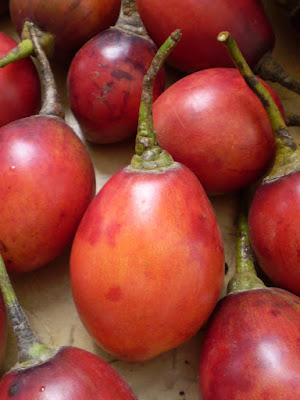Well Summer is in mid-swing down here in New Zealand and the garden is in peak growth. It's actually been a great season so far as there has been fairly frequent rainfall so to not dry out the garden as in previous years. I think last year we needed to water almost every day as it didn't rain hardly at all for 4 months last Summer. There hasn't been a lot of fruit harvest at the moment but currently in season we are now harvesting:
Kale, Lettuce, Basil, Spring Onions, Chives, Dill, Zucchinis, Raspberries, Strawberries, Lemons, Limes, Rosemary, Swiss Chard, Tomatoes.
Also available now is an interesting herb I've been growing called Epazote. Its used extensively in Mexican cooking for its unique flavour, but also because it has an interesting characteristic. It helps prevent gas (farts) from when you eat beans. It has a strong kerosene-like flavour fresh, but when cooked it has an appealing sort of earthy depth of flavour. Check it out & give it a go!
I have just today harvested my first Tomato. I have a few varieties planted: Black Krim, Yellow Teardrop, Sweet 100, Red Roma, Beefsteaks plus a few other pop ups of unknown origin.
Also available now is an interesting herb I've been growing called Epazote. Its used extensively in Mexican cooking for its unique flavour, but also because it has an interesting characteristic. It helps prevent gas (farts) from when you eat beans. It has a strong kerosene-like flavour fresh, but when cooked it has an appealing sort of earthy depth of flavour. Check it out & give it a go!
I have just today harvested my first Tomato. I have a few varieties planted: Black Krim, Yellow Teardrop, Sweet 100, Red Roma, Beefsteaks plus a few other pop ups of unknown origin.
Roses have been flowering for over a month now and are now in peak bloom we have over 20 planted throughout the garden. Varieties include In Loving Memory, My Girl, Blackberry Nip, Amber Light, Metro, Freesia, Peace & Blue Moon.
The Lavender Farm has really taken off. And although it is in its first year it is looking great with loads of flower spikes. I will need to add some more bark mulch this week which is working out great to cover the weedmat but also conserve moisture. We should have a decent first harvest soon.
Gardenias have just this week started to pop. And i have to say they are THE best smelling flower I've sniffed. Just a couple in a room will scent the whole room with its luscious aroma.
In other flower news: Hydrangeas, Hibiscus, Gladioli & Aqualegias are all out and looking stunning.
As far as fruit coming along little Blackcurrants, Figs, Grapes, Oranges, Peaches, Nectarines, Apples, are all growing by the day for harvest within the coming months.
In Citrus news: Limes are starting to become available now with a few coming to ripeness. But it isn't really until March that they will reach peak-Margarita. All the Citrus have now flowered and set little fruitlets ready for winter harvests. I do however have one Meiwa Kumquat just about ready to enjoy which will be my first home grown kumquat to eat!































































